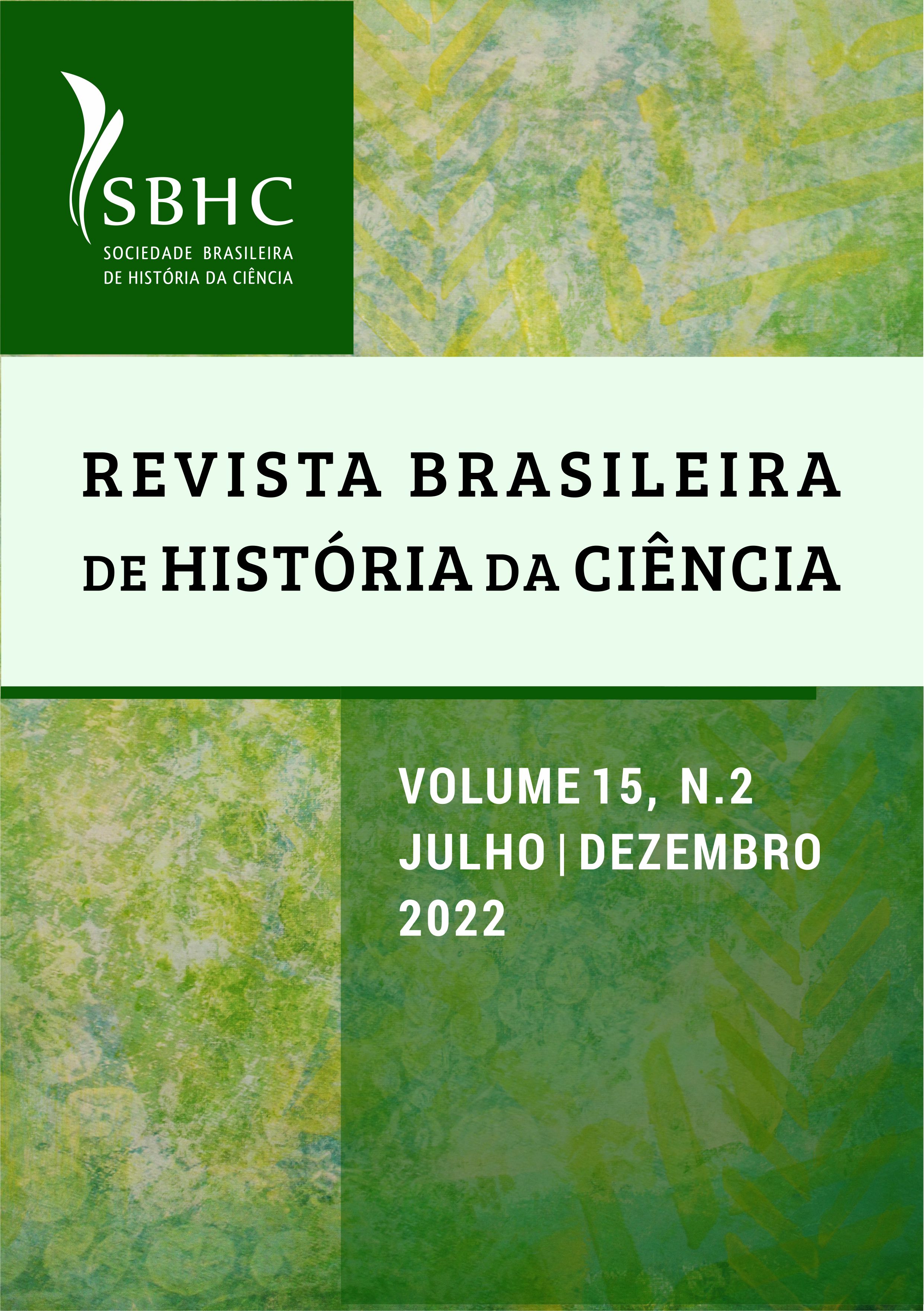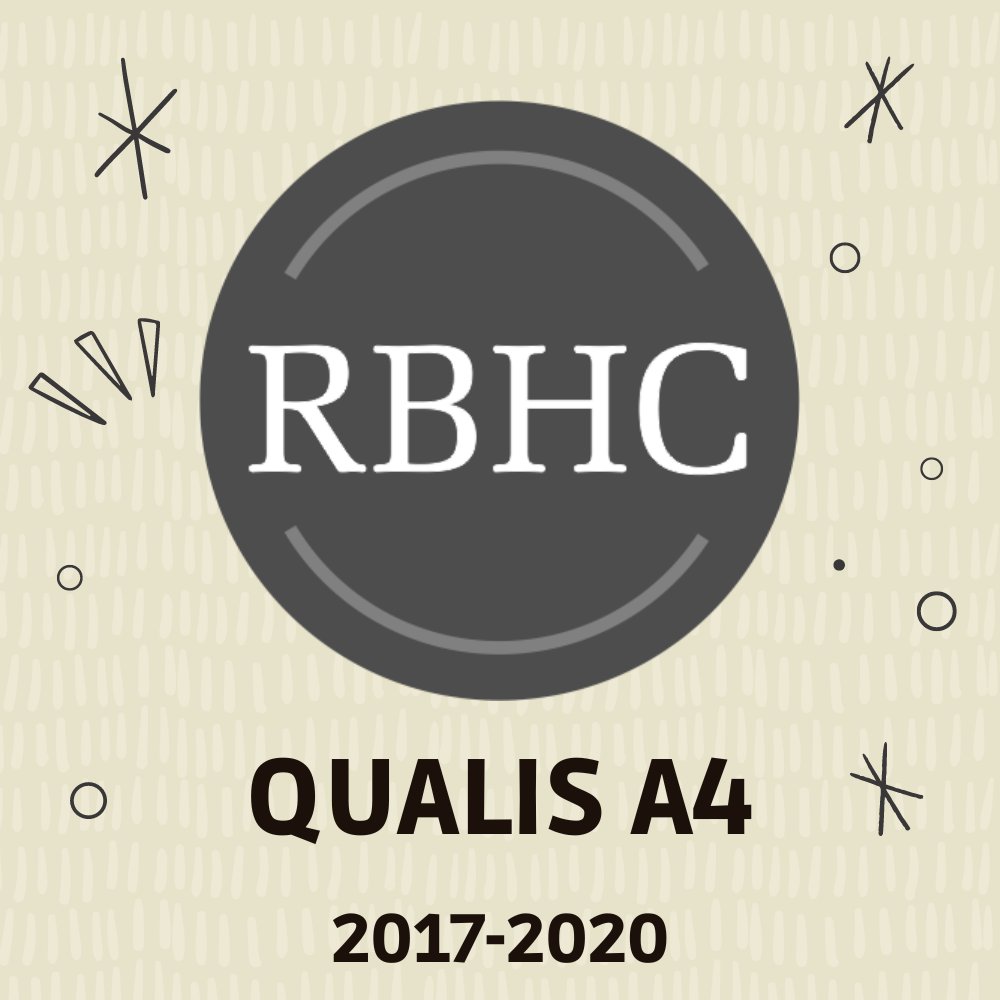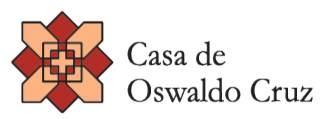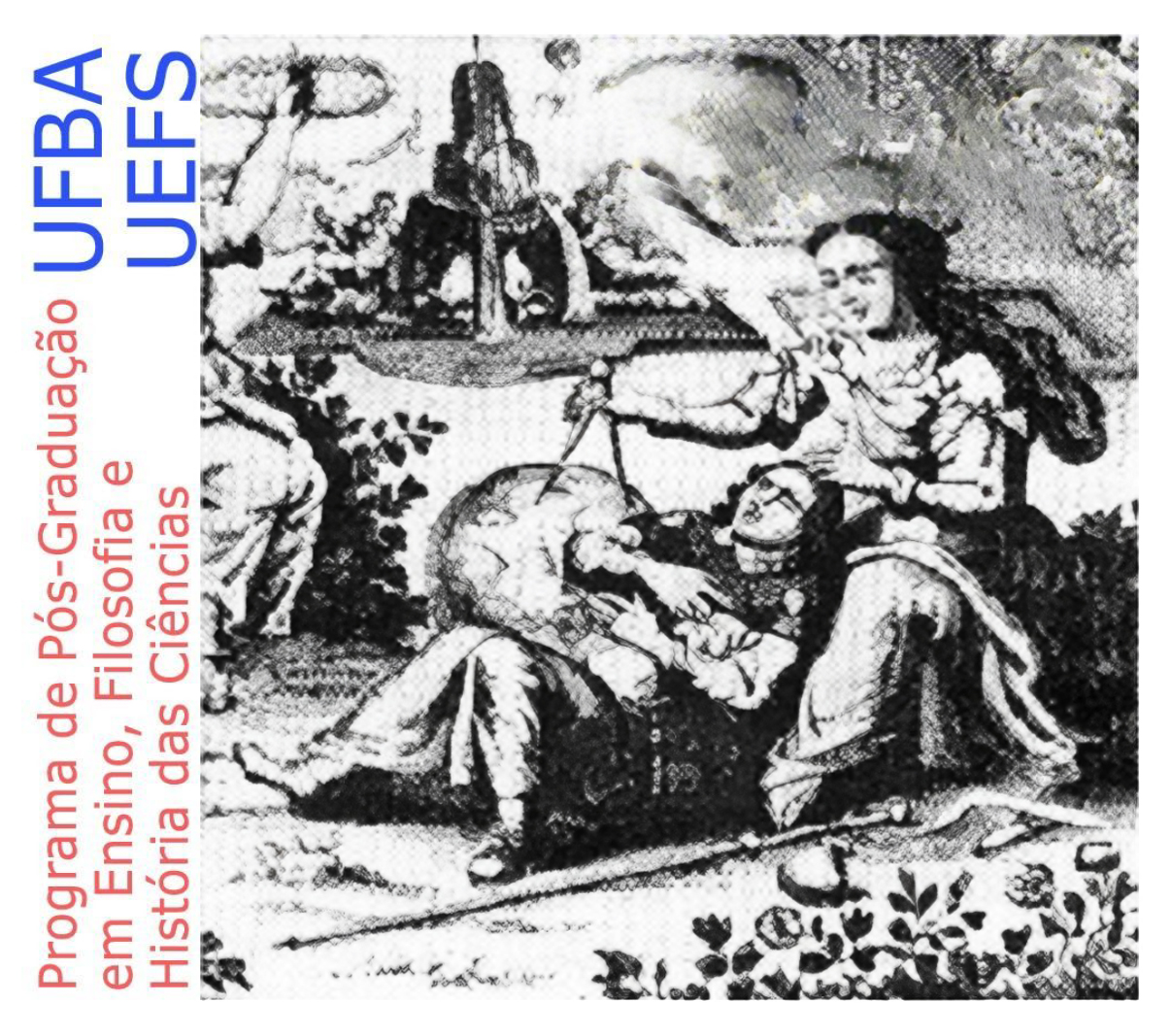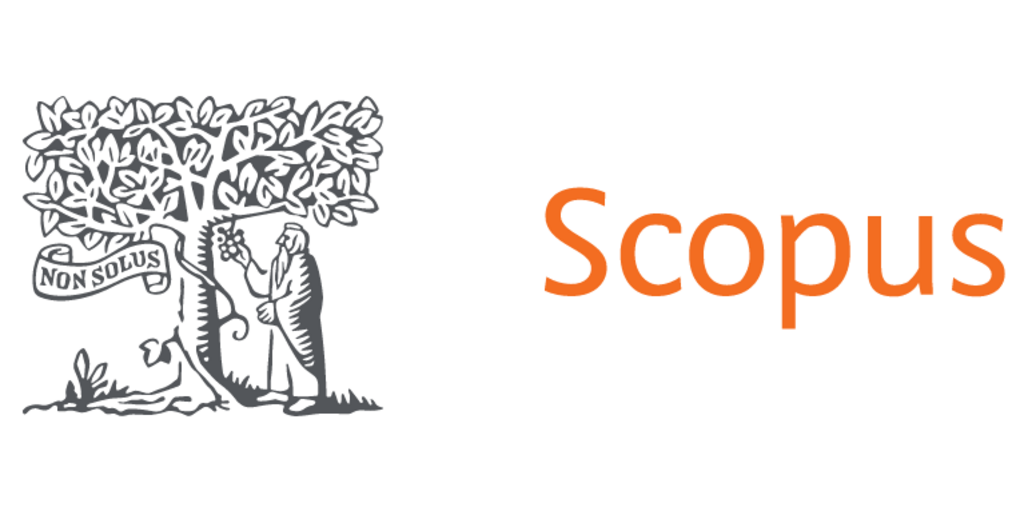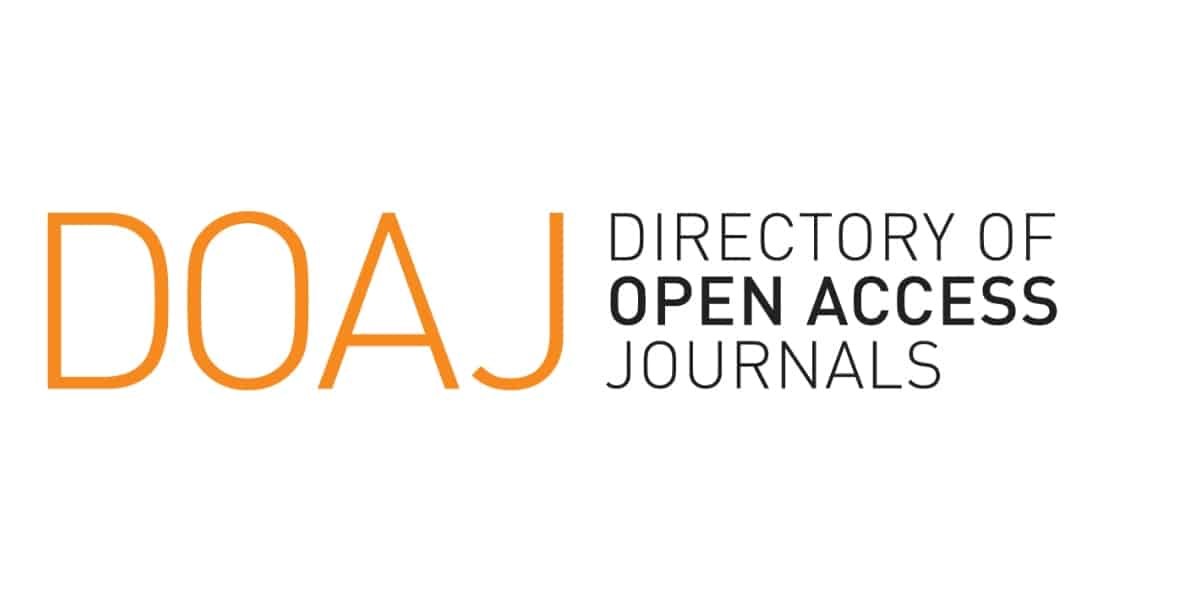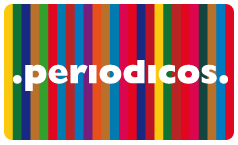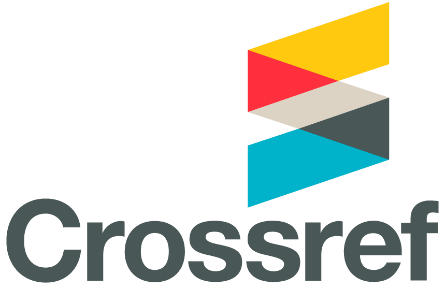Análise de aspectos de natureza da ciência na minissérie Chernobyl e considerações sobre o uso da minissérie no ensino de ciências
DOI:
https://doi.org/10.53727/rbhc.v15i2.774Palavras-chave:
Chernobyl; natureza da Ciência; educação científica para as mídias; acidente nuclear; caso histórico, radioatividade.Resumo
Este artigo apresenta uma análise da minissérie Chernobyl, em relação aos aspectos de natureza da ciência (NdC) retratados, discutindo a potencialidade dessa obra no ensino sobre ciências. Foi realizada a categorização das áreas e aspectos de NdC à luz do modelo MoCEC v.2, sendo identificadas as seis áreas do conhecimento e 250 aspectos de NdC, destacando a riqueza e o potencial da minissérie para introduzir a discussão desses aspectos no ensino de ciências. Por fim, esse trabalho discute a necessidade de uma alfabetização científica para as mídias na formação dos estudantes e da importância dos conhecimentos de NdC para a compreensão de como um conhecimento científico é desenvolvido e/ou utilizado.
Downloads
Referências
ABELSON, P. Scientific communication. Science, v. 209, n. 4452, p. 60-62, 1980. DOI: https://doi.org/10.1126/science.7280664. DOI: https://doi.org/10.1126/science.7280664
ALEKSLÉVITCH, S. Vozes de Tchernóbil: a história oral do desastre nuclear. São Paulo: Companhia das Letras, 2016.
ALLCHIN, D. Scientific myth-conceptions. Science Education, v. 87, n. 3, p. 329-351, 2003. DOI: https://doi.org/10.1002/sce.10055. DOI: https://doi.org/10.1002/sce.10055
ALLCHIN, D. Pseudohistory and pseudoscience. Science & Education, v. 13, n. 3, p. 179-195, 2004. DOI: https://doi.org/10.1023/B:SCED.0000025563.35883.e9. DOI: https://doi.org/10.1023/B:SCED.0000025563.35883.e9
ALLCHIN, D. Evaluating knowledge of the nature of (whole) science. Science Education, v. 95, n. 3, p. 518-542, 2011. DOI: https://doi.org/10.1002/sce.20432. DOI: https://doi.org/10.1002/sce.20432
ALLCHIN, D. Toward clarity on whole science and knows. Science Education, v. 96, n. 4, p. 693-700, 2012. DOI: https://doi.org/10.1002/sce.21017. DOI: https://doi.org/10.1002/sce.21017
ALLCHIN, D. Teaching the nature of science: perspectives and resources. St. Paul: SHiPS Education Press, 2013.
ALLCHIN, D. From science studies to scientific literacy: a view from the classroom. Science & Education, v. 23, n. 9, p. 1911-1932, 2014. DOI: https://doi.org/10.1007/s11191-013-9672-8. DOI: https://doi.org/10.1007/s11191-013-9672-8
ALLCHIN, D. Beyond the consensus view: whole science. Canadian Journal of Science, Mathematics and Technology Education, v. 17, n. 1, p. 18-26, 2017. DOI: https://doi.org/10.1080/14926156.2016.1271921. DOI: https://doi.org/10.1080/14926156.2016.1271921
ALLCHIN, D.; ANDERSEN, H.M.; NIELSEN, K. Complementary approaches to teaching nature of science: integrating student inquiry, historical cases, and contemporary cases in classroom practice. Science Education, v. 98, n. 3, p. 461-486, 2014. DOI: https://doi.org/10.1002/sce.21111. DOI: https://doi.org/10.1002/sce.21111
ARAÚJO, R.F.R.; OLIVEIRA, F.S.; NETO, J.P.P. Análise das concepções alternativas sobre a natureza do conhecimento científico na disciplina de química do ensino médio. Scientia Naturalis, v. 3, n. 2, p. 523-535, 2021. Disponível em: https://periodicos.ufac.br/index.php/SciNat/article/view/5661. Acesso em: 2 out. 2022.
AZEVEDO, N.H.; SCARPA, D.L. Revisão sistemática de trabalhos sobre concepções de natureza da ciência no ensino de ciências. Revista Brasileira de Pesquisa em Educação em Ciências, v. 17, n. 2, p. 579-679, 2017. DOI: https://doi.org/10.28976/1984-2686rbpec2017172579. DOI: https://doi.org/10.28976/1984-2686rbpec2017172579
CHERNOBYL. Direção: Johan Renck. Produção: Carolyn Strauss; Craig Mazin; Johan Renck; Chris Fry; Jane Featherstone; Sanne Wohlenberg. Roteiro: Craig Mazin. Estados Unidos da América: streaming HBO Max, 2019. 1 temporada, 5 episódios (328 min), on-line, color.
COHEN, L.; MANION, L.; MORRISON, K. Research methods in education. 8ª ed. New York: Routledge, 2018. Disponível em: https://www.routledge.com/Research-Methods-in-Education/Cohen-Manion-Morrison/p/book/9781138209886. Acesso em: 2 out. 2022. DOI: https://doi.org/10.4324/9781315456539
CRICK, M.J. The importance of trustworthy sources of scientific information in risk communication with the public. Journal of Radiation Research, v. 62, supl. 1, p. i1-i6, 2021. DOI: https://doi.org/10.1093/jrr/rraa143. DOI: https://doi.org/10.1093/jrr/rraa143
CROSS, R.; ZATSEPIN, V.; GAVRILENKO, I. Preparing future citizens for post ‘Chernobyl’ Ukraine: a national calamity brings about reform of science education. Melbourne Studies in Education, v. 41, n. 2, p. 179-187, 2000. DOI: https://doi.org/10.1080/17508480009556370. DOI: https://doi.org/10.1080/17508480009556370
DAGHER, Z.R.; ERDURAN, S. Reconceptualizing the nature of science for science education. Science & Education, v. 25, n. 1, p. 147-164, 2016. DOI: https://doi.org/10.1007/s11191-015-9800-8. DOI: https://doi.org/10.1007/s11191-015-9800-8
GILBERT, J.K.; JUSTI, R. Modelling-based teaching in science education. Cham: Springer, 2016. DOI: https://doi.org/10.1007/978-3-319-29039-3. DOI: https://doi.org/10.1007/978-3-319-29039-3
HIGGINBOTHAM, A. Midnight in Chernobyl: the untold story of the world’s greatest nuclear disaster. New York: Penguin Random House, 2019.
HODSON, D. Learning science, learning about science, doing science: different goals demand different learning methods. International Journal of Science Education, v. 36, n. 15, p. 2534-2553, 2014a. DOI: https://doi.org/10.1080/09500693.2014.899722. DOI: https://doi.org/10.1080/09500693.2014.899722
HODSON, D. Nature of science in the science curriculum: origin, development, implications and shifting emphases. In: MATTHEWS, M.R. (ed.). International handbook of research in history, philosophy and science teaching. Dordrecht: Springer, 2014b. p. 911-970. DOI: https://doi.org/10.1007/978-94-007-7654-8_28. DOI: https://doi.org/10.1007/978-94-007-7654-8_28
HÖTTECKE, D.; ALLCHIN, D. Reconceptualizing nature-of-science education in the age of social media. Science Education, v. 104, n. 4, p. 641-666, 2020. DOI: https://doi.org/10.1002/sce.21575. DOI: https://doi.org/10.1002/sce.21575
IREZ, S. Are we prepared? An assessment of preservice science teacher educators’ beliefs about nature of science. Science Education, v. 90, n. 6, p. 1113-1143, 2006. DOI: https://doi.org/10.1002/sce.20156. DOI: https://doi.org/10.1002/sce.20156
IRZIK, G.; NOLA, R. A family resemblance approach to the nature of science for science education. Science & Education, v. 20, n. 7, p. 591-607, 2011. DOI: https://doi.org/10.1007/s11191-010-9293-4. DOI: https://doi.org/10.1007/s11191-010-9293-4
JUSTI, R.; ERDURAN, S. Characterizing nature of science: a supporting model for teachers. In: Conference of the International History, Philosophy, and Science Teaching Group, 2015, Rio de Janeiro. Proceedings…. Rio de Janeiro: IHPST, 2015.
JUSTI, R.; SANTOS, M.; ELYSEU, G. Relating science communication to nature of science. In: Conference of the European Science Education Research Association, 14., 2021, Braga. Proceeding…. Braga: ESRA, 2021.
KAPUCU, M.S.; CAKMAKCI, G.; AYDOGDU, C. The influence of documentary films on 8th grade students’ views about nature of science. Educational Sciences: Theory & Pratice, v. 15, n. 3, p. 797-808, 2015. DOI: https://doi.org/10.12738/estp.2015.3.2186. DOI: https://doi.org/10.12738/estp.2015.3.2186
KE, L.; SADLER, T.D.; ZANGORI, L.; FRIEDRICHSEN, P.J. Developing and using multiple models to promote scientific literacy in the context of socio-scientific issues. Science & Education, v. 30, n. 3, p. 589-607, 2021. DOI: https://doi.org/10.1007/s11191-021-00206-1. DOI: https://doi.org/10.1007/s11191-021-00206-1
LEATHERBARROW, A. Chernobyl 01:23:40: the incredible true story of the world’s worst nuclear disaster. [s.l.]: Andrew Leatherbarrow, 2016.
LEDERMAN, N.G.; ABD-EL-KHALICK, F.; BELL, R.L.; SCHWARTZ, R.S. Views of nature of science questionnaire: toward valid and meaningful assessment of learners’ conceptions of nature of science. Journal of Research in Science Teaching, v. 39, n. 6, p. 497-521, 2002. DOI: https://doi.org/10.1002/tea.10034. DOI: https://doi.org/10.1002/tea.10034
LEWIN, M. The Gorbachev phenomenon: a historical interpretation. Berkeley: University of California Press, 1991.
LEWIN, M. O século soviético. São Paulo: Record, 2007.
LOCHARD, J. Psychological and social impacts of post-accident situations: lessons from the Chernobyl accident. Austria: Berger, 1996. Disponível em: http://inis.iaea.org/search/search.aspx?orig_q=RN:27066487. Acesso em: 2 out. 2022.
MAIA, P.; JUSTI, R.; SANTOS, M. Aspects about science in the context of production and communication of knowledge of Covid-19. Science & Education, v. 30, n. 5, p. 1075-1098, 2021. DOI: https://doi.org/10.1007/s11191-021-00229-8. DOI: https://doi.org/10.1007/s11191-021-00229-8
MARTINS, A.F.P. Natureza da ciência no ensino de ciências: uma proposta baseada em “temas” e “questões”. Caderno Brasileiro de Ensino de Física, v. 32, n. 3, p. 703-737, 2015. DOI: https://doi.org/10.5007/2175-7941.2015v32n3p703. DOI: https://doi.org/10.5007/2175-7941.2015v32n3p703
MOURA, B.A. O que é natureza da ciência e qual sua relação com a história e filosofia da ciência? Revista Brasileira de História da Ciência, v. 7, n. 1, p. 32-46, 2014. DOI: https://doi.org/10.53727/rbhc.v7i1.237. DOI: https://doi.org/10.53727/rbhc.v7i1.237
MOURA, C.; CAMEL, T.; GUERRA, A. A natureza da ciência pelas lentes do currículo: normatividade curricular, contextualização e os sentidos de ensinar sobre ciências. Ensaio Pesquisa em Educação em Ciências, v. 22, e15631, p. 1-27, 2020. DOI: https://doi.org/10.1590/1983-21172020210114. DOI: https://doi.org/10.1590/1983-21172020210114
NIELSEN, K.H. Scientific communication and the nature of science. Science & Education, v. 22, n. 9, p. 2067-2086, 2013. DOI: https://doi.org/10.1007/s11191-012-9475-3. DOI: https://doi.org/10.1007/s11191-012-9475-3
OLIVEIRA, B.J. História da ciência no cinema. In: GOMES, A.C.V.; CARVALHO, E.B. (org.). História da ciência no cinema 5. Belo Horizonte: Fino Traço, 2005. p. 189-189.
PEDUZZI, L.; RAICIK, A. Sobre a natureza da ciência: asserções comentadas para uma articulação com a história da ciência. Investigações em Ensino de Ciências, v. 25, n. 2, p. 19-55, 2020. DOI: https://doi.org/10.22600/1518-8795.ienci2020v25n2p19. DOI: https://doi.org/10.22600/1518-8795.ienci2020v25n2p19
PLOKHY, S. Chernobyl: the history of a nuclear catastrophe. London: Hachette, 2018.
REID, G.; NORRIS, S.P. Scientific media education in the classroom and beyond: a research agenda for the next decade. Cultural Studies of Science Education, v. 11, n. 1, p. 147-166, 2016. DOI: https://doi.org/10.1007/s11422-015-9709-1. DOI: https://doi.org/10.1007/s11422-015-9709-1
ROBERTS, D.A. Scientific literacy/science literacy. In: ABELL, S.K.; APPLETON, K. (eds.). Handbook of research on science education. New York: Routlege, 2007. p. 729-780. DOI: https://doi.org/10.4324/9780203824696. DOI: https://doi.org/10.4324/9780203824696
SANTOS, M.; MAIA, P.F.; JUSTI, R. Um modelo de ciências para fundamentar a introdução de aspectos de natureza da ciência em contextos de ensino e para analisar tais contextos. Revista Brasileira de Pesquisa em Educação em Ciências, v. 20, p. 581-616, 2020. DOI: https://doi.org/10.28976/1984-2686rbpec2020u581616. DOI: https://doi.org/10.28976/1984-2686rbpec2020u581616
SANTOS, P.N.; AQUINO, K.A.S. Utilização do cinema na sala de aula: aplicação da química dos perfumes no ensino de funções orgânicas oxigenadas e bioquímica. Química Nova na Escola, v. 33, n. 3, p. 160-167, 2011. Disponível em: http://qnesc.sbq.org.br/online/qnesc33_3/160-RSA02910.pdf. Acesso em: 2 out. 2022.
SASSERON, L.H.; CARVALHO, A.M.P.d. Alfabetização científica: uma revisão bibliográfica. Investigações em Ensino de Ciências, v. 16, n. 1, p. 59-77, 2011. Disponível em: https://www.if.ufrgs.br/cref/ojs/index.php/ienci/article/view/246. Acesso em: 2 out. 2022.
SOLBES, J.; TORRES, N. Energía nuclear: una cuestion sociocientífica para el desarrollo del pensamiento crítico. In: CONRADO, D.M.; NUNES-NETO, N. (eds.). Questões sociocientíficas: fundamentos, propostas de ensino e perspectivas para ações sociopolíticas. Salvador: Edufba, 2018. p. 375-394. DOI: https://doi.org/10.7476/9788523220174.0019. DOI: https://doi.org/10.7476/9788523220174.0019
STUBNA, J.; HOSTOVECKY, M.; TOTHOVA, D. Documentary movies as a motivation in science subjects. In: IEEE International Conference on Emerging Elearning Technologies and Applications, 12., 2014, Vysoké Tatry. Anais…. Vysoké Tatry: IEEE Xplore, 2014. p. 169-174. DOI: https://doi.org/10.1109/ICETA.2014.7107579. DOI: https://doi.org/10.1109/ICETA.2014.7107579
UNESCO. Educação para a cidadania global: preparando alunos para os desafios do século XXI. Brasília: Unesco, 2015. Disponível em: https://unesdoc.unesco.org/ark:/48223/pf0000234311. Acesso em: 2 out. 2022.
VAN DIJK, E.M. Portraying real science in science communication. Science Education, v. 95, n. 6, p. 1086-1100, 2011. DOI: https://doi.org/10.1002/sce.20458. DOI: https://doi.org/10.1002/sce.20458
Downloads
Publicado
Edição
Seção
Licença
Copyright (c) 2022 Waldemar Victor Martins Silva, Eliriane Caroline da Silva, Poliana Flávia Maia, Érica Cristina Gonçalves

Este trabalho está licenciado sob uma licença Creative Commons Attribution-NonCommercial-NoDerivatives 4.0 International License.

